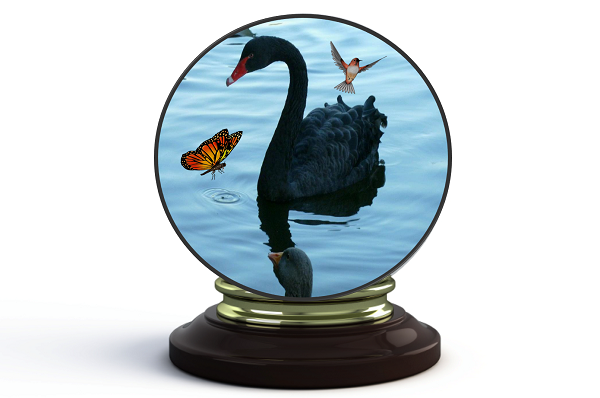ATD Blog
Butterflies, Black Swans, and Hummingbirds–Predicting the Future of Learning
Thu Mar 23 2017


If you’ve ever watched or read science fiction, you probably know about the “Butterfly Effect.” The idea is that the gentle flapping of a butterfly’s wings can stir up a hurricane on the other side of the world. What you may not know is that the idea comes from actual science, specifically meteorology. Discovered by weather man Edward Lorenz, the butterfly effect helps explain why it is so hard to predict the weather, even with today’s marvelous technology.
Physicists eventually extrapolated the concept, leading to Chaos Theory. The basic idea is that the world is so complex that we don’t know what we don’t know, so there could be all kinds of cause and effect relationships going on that we’re just unable to detect. What we do know for sure is that somehow everything is connected at a deep, sub-atomic particle level. The longer the timeline, the more chaos you introduce, so the harder it is to predict the outcome of all these interactions. In fact, some argue that it is so difficult to predict a complex, unstable system that there is little point in trying.
Which brings us to black swans. In the wake of the 2008 global recession, economist Nassim Nicholas Taleb coined the term “black swan” to refer to catastrophic events that come at us out of left field, completely counter to expert predictions. He argued that these events make our systems stronger, as we emerge from each crisis more prepared for the next one. Black Swan Theory is sort of a pessimistic chaos theory for the world of business; it teaches us to expect the unexpected and to expect that it will have negative consequences. If we factor in some black swans as part of our predictive efforts, we might scale back some of the current excitement about the impact of virtual reality, machine learning and other technological marvels on learning, expecting some sort of currently unexpected failure will slow or halt the progress we’ve seen in these early days of development.
The Hummingbird Effect is a backwards-looking variation on the Butterfly Effect, connecting seemingly unrelated technological advances that cumulatively lead to a disruptive change. For example, Steven Johnson identifies six seemingly unrelated advancements that brought about our current modern age: availability of clean water, electronic transmission of sound, electric lights, mirrors, refrigeration and standardized time-keeping. According to the Hummingbird Effect theory, if we could transport ourselves ahead 20 years or so and then come back, we might be able to find the threads of our future in some of the trends of today, but it doesn’t necessarily help us identify future hummingbirds here and now.
Still, despite how hard it is to predict the future, we just can’t seem to stop ourselves from doing it. Part of the reason for our fascination with the future is that our human brain is hard-wired to recognize patterns, a survival adaptation that helps us prepare for life-threatening events in our daily lives. Futurist Ray Kurzweil suggests that while this has been handy up until now, we need to develop a new type of “exponential” predictive skill, one that keeps pace with the accelerating pace of change in our technology. Perhaps one day our companion robot will do that for us.
My presentation at this year’s ATD International Conference & Expo will transport us to the year 2027, to see how some of today’s trends will affect the way we help people learn in the future. We’ll be looking at such apparently disparate technologies as machine learning, virtual reality, neural networks and the application of neuroscience. While I can’t promise that we’ll come across any butterflies or black swans, I do plan on showing you a few hummingbird effects and using our combined predictive skills to anticipate a “brave new world” of learning. It should be fun to look through the crystal ball together.
